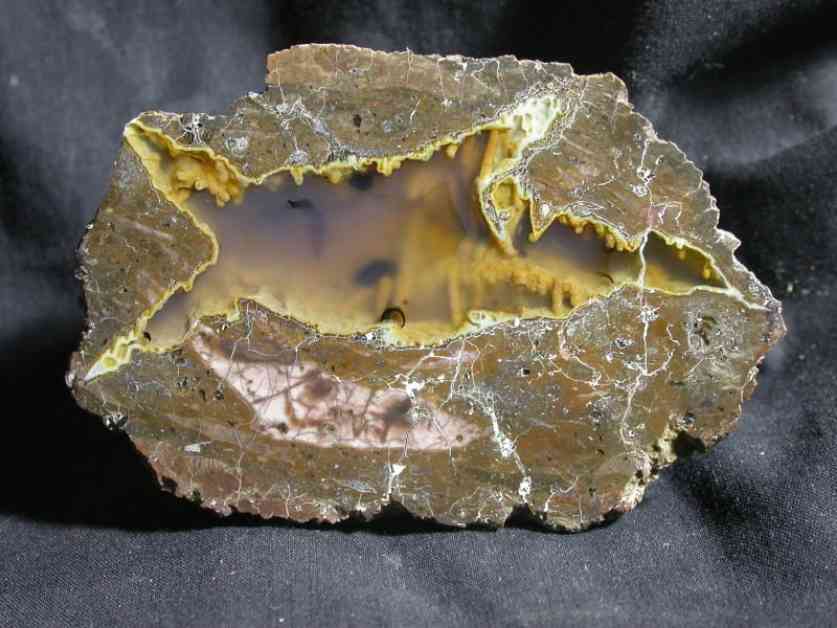Thundereggs are fascinating rocks that may look ordinary on the outside but hold intricate and colorful mineral patterns inside. These rocks are typically found in volcanic regions with rhyolite lavas and are formed through igneous processes. Igneous rocks form when molten rock material, known as magma, solidifies either below the Earth’s surface or at the surface after a volcanic eruption.
The cooling rate of magma affects the size of crystals that form within the rock. Slower cooling beneath the surface allows for larger crystals, while rapid cooling at the surface results in finer-grained textures. Thundereggs specifically form in rhyolitic lava flows, which are characterized by high silica content and low temperatures.
The formation of a thunderegg begins with the cooling of rhyolitic lava, trapping gas bubbles within the rock. Mineral-rich water then seeps into the lava, carrying minerals like silica, quartz, and feldspar that crystallize around the gas bubbles over time. Thundereggs spend millions of years buried underground before geological forces bring them closer to the surface, where erosion plays a crucial role in exposing them.
Unlike geodes, which have hollow cavities lined with crystals and form in sedimentary rocks, thundereggs are solid throughout. Their formation is closely tied to volcanic activity and the crystallization of minerals within gas bubbles of rhyolitic ash. Thundereggs offer valuable insights into volcanic activity and the geological history of the regions where they are found, making them a subject of interest for geologists and collectors alike.
If you’re interested in finding thundereggs, locations like Oregon and New Mexico are known for their abundant deposits. These rocks can be found in high desert regions near towns like Madras and Prineville, embedded in volcanic ash or soil. Joining rockhounding clubs or guided tours can enhance your chances of successful thunderegg hunting while ensuring you follow any necessary regulations.
Thundereggs are not just beautiful rocks; they represent the complex geological processes that shape our planet. Understanding the formation of thundereggs can lead to a deeper appreciation of these unique rocks and the geological phenomena they capture. Whether you’re a geologist studying their scientific value or a collector admiring their beauty, thundereggs hold a special place in the world of rocks and minerals.



